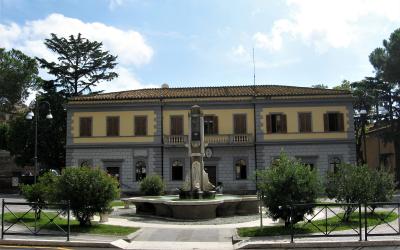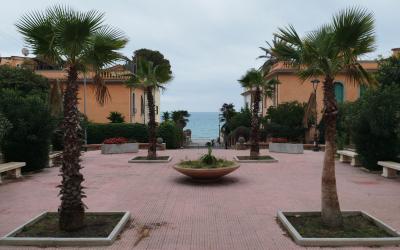Canale Monterano village surrounded by nature
Canale was founded at the end of the 16th century by Tuscan and Umbrian settlers called upon by the feudal lord to deforest the forest and cultivate new lands and by the inhabitants of Monterano themselves who had opted for a less isolated and healthier place than their own.
The first dwellings in Canale consisted of huts very similar to those that were used in the countryside for agricultural purposes. The first masonry buildings were constructed when the population started to grow. The centre of the village consisted of a small cluster of houses around a small parish church, now called the Oratory.
Later, the forest was cut more extensively in the longitudinal area that now forms the Corso della Repubblica, where the most important dwellings were built, along with shops and workshops.
With the annexation to the Kingdom of Italy, the municipality, comprising the villages of Canale and Montevirginio united, took the name Canale Monterano, in memory of the ancient abandoned city.
MONTEVIRGINIO (hamlet of Canale Monterano)
The agricultural settlers, recruited at the end of the 16th century by the Orsini feudal lords to cultivate their lands on Mount Sassano, formed a small settlement at the foot of this trachytic hill, which they named Montesassano, but which was, however, short-lived. In fact, a few years after their settlement, the settlers were moved further downstream by Duke Virginio Orsini, who wanted to make way for the construction of a hermitage.
Here they were gifted plots of building land on which they formed a village, which took the name Montevirginio, in homage to the donor. The new settlement was based, as it is today, around a single large open space (today's Piazza Sant'Egidio) from which four roads branched off to Oriolo, Monterano, Canale and the new hermitage, respectively.
FOLKLORE
Among the folklore events, the one of greatest importance to the locals is the renowned Corsa del Bigonzo or Palio delle Contrade, which is repeated every year at the end of August in honour of the patron saints St Bartholomew and St Calepodia.
During the race, each team is made up of four runners who, in knock-out heats, must run along the course of Canale, carrying a stretcher on their shoulders with a bigonzo (a typical wooden vessel used for the grape harvest) wedged in the middle.
The runners, each carrying an arm of the stretcher on their shoulder, are thus 'tied' to each other and, as they attempt to reach the finish line first, they must try to coordinate as possible to avoid disastrous falls. The race is preceded by an atmospheric parade in period costumes, during which each Contrada presents its figures and precious clothes, all livened up by flag-wavers, jugglers and drummers.
The tradition of the Buttero, a kind of Maremma cowboy, is very deep-rooted.
In Canale Monterano, the figure of the Buttero is still recognised, appreciated and handed down from father to son. Every year, in May, the 'Riarto dei Butteri'is organised, a traditional event to which great importance is attached.
TYPICAL PRODUCTS
One of Canale Monterano's feathers in the cap are its typical products, including cheese, honey, excellent oil, meat and wonderful bread, made as it once was, so much so that it has earned this area membership in the exclusive Associazione Città del Pane.












